11 Pretty Sweet Decorating Ideas Using Pastels
Pastels often get a bad rap for being too sugary sweet, frivolous or girly. But don’t be too quick to fall into this mind-set and immediately pass over pastel shades when choosing which hues to incorporate into your home. The secret to making soft, chalky colors work is to balance them with cool whites, moody black, gray and other neutral tones. Introducing clean, contemporary lines and modern design elements as well as raw, sleek or edgy materials will also cut through the cuteness and ensure that your design looks fresh, grown-up and chic, rather than childish or overly feminine.
Whether you’re a longtime lover of pastels or a newfound fan of the versatile pale palette, the spaces below will provide plenty of design inspiration and show how soft, muted shades can be woven into your home’s decorating scheme with great success.
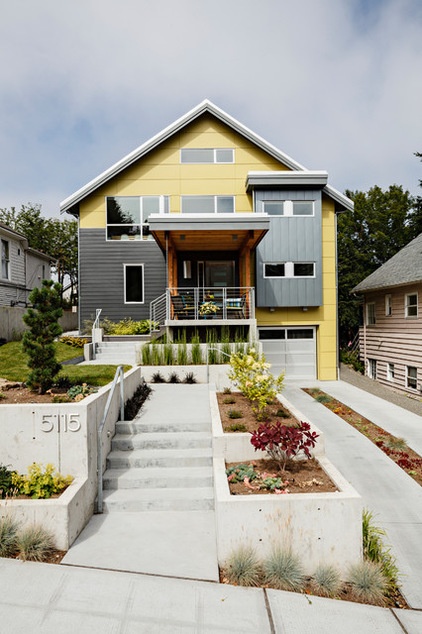
1. Take it outside. Love the idea of adding a splash of color to the exterior of your home, but not a fan of bright, bold hues? Pastel shades, such as the muted yellow-green on the exterior walls of this striking home, are a great alternative, as they offer subtle color and style without being overwhelming.
Take note of how the two sections of gray-toned cladding on either side of the front door help offset the cheerful yellow-green panels and give the exterior scheme a modern edge. The material palette of concrete, steel and timber also offers contrast and adds to the dwelling’s cool, contemporary look.
Tip: If you want to decorate your home (either indoors or out) with a pastel hue, but cheerful colors — such as sunny yellow, fresh mint and powder pink — aren’t your thing, opt for shades with smoky, slightly dirty undertones, such as pale mustard, moss green or dusty rose, instead.
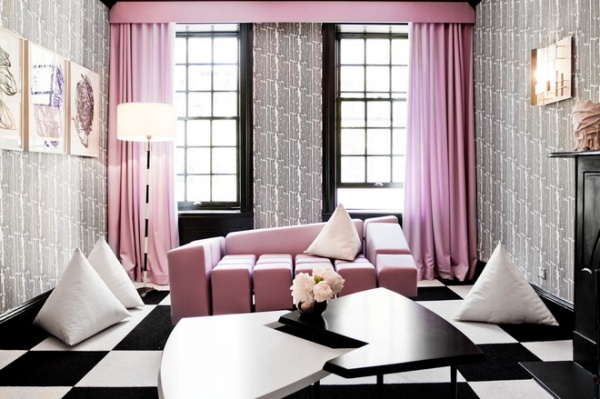
2. Strive for a cool, contemporary look. Sure, some pastel tones, including frosty pink and lilac, do look cutesy and sweet on their own, but introduce them in a sleek, ultramodern space (like the showstopping living room here) and the colors instantly take on a cool, grown-up and seriously chic vibe.
Here powder-pink curtains and a lilac geometric sofa add a dash of subtle yet statement-making color to this stark monochromatic scheme — I love how the graphic design of the sofa makes the pinky-purple hue take on an edgier appearance, despite its dreamy color.
Thanks to their soft, chalky tone and smooth texture, the rosy accents also help balance the sharp lines, exaggerated angles and glossy surfaces used heavily throughout the room, resulting in a space that oozes modern sophistication, layered with a hint of refined, ladylike style.
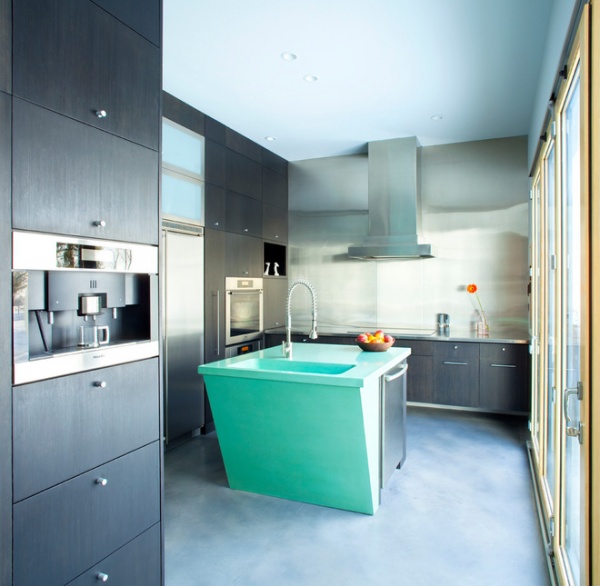
3. Create drama with a single pastel accent. An unexpected burst of bright color in an otherwise neutral or monochromatic space never fails to make a dramatic statement … and the same goes when you add a single pop of a pastel shade to a similar scheme, even though pale tones are generally less bold and vibrant.
This contemporary cooking zone shows this idea in action. Here the soft sea-green-tinged concrete island commands all the attention, thanks to its striking sorbet color, which pops against the room’s moody palette and instantly brightens up the space. Its angular design makes the freestanding piece a standout too.
Tip: Not quite ready to commit to using a pastel hue on a permanent fixture in your kitchen or another area in your home? Rather than choosing a pastel color for the island, another permanent structure (such as cabinetry) or a big-ticket item (such as furniture), introduce a single splash of color in the form of smaller or removable items or design features, such as a pendant light, artwork, a rug, curtains or a painted feature wall, that will be easy to replace or alter once your love affair with your pastel of choice is over.
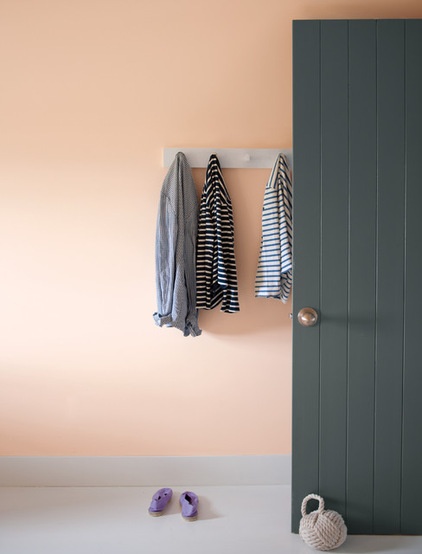
4. Pair it with gray. An easy way to give a frothy pastel that you’d expect to see in an elegant, traditional-style space a modern update is to pair it with a splash (or two) of moody gray.
This striking scheme shows how it’s done. The charcoal-gray door and dove-gray floor anchor this warm, airy space and give the pale peach wall a fresh, hip and contemporary vibe.
The breath of white (in the form of a peg coatrack) also helps cut through the color and adds to the entry’s cool, modern feel.
Wall paint: Peach Parfait, Benjamin Moore
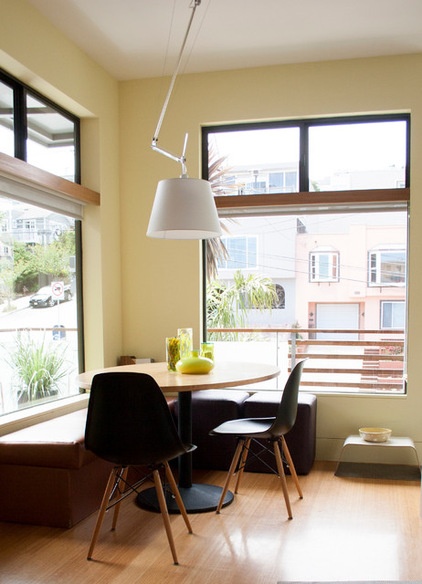
5. Use chalky shades in place of classic neutrals. Tired of classic neutrals such as beige or cream? Choose a base with a hint of barely there color instead — it will be soft and inviting, and will add visual interest and character. Plus, like versatile neutral tones, supersubtle pastels work well with pretty much any hue, so you won’t be limited for choice when selecting furniture and decor to complete your scheme.
Pale lemon is an ideal substitute for cream, as you can see here, while powder pink and soft peach are other great alternatives to warm, neutral tones.
Tip: Pastels are great go-to colors if you wish to add color and a dash of personality to a compact room. While more vibrant hues do pack a stylish punch, they can look too overwhelming in a tight space and make the area appear smaller. Pale shades add character and a hint of color while keeping things light and airy.
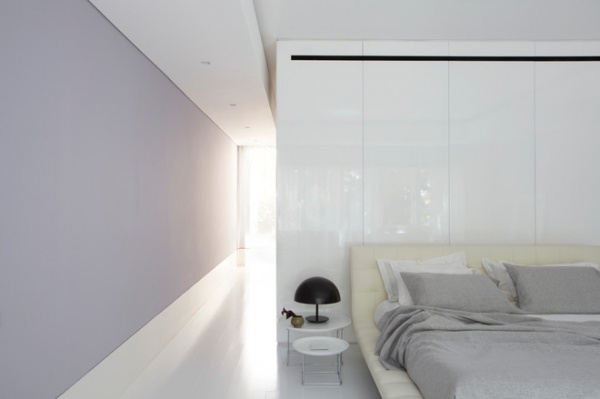
Desire a pastel base that borders on gray, rather than beige? Opt for an ashy blue or a cool, dusty lavender, like the paint color seen on the wall here.
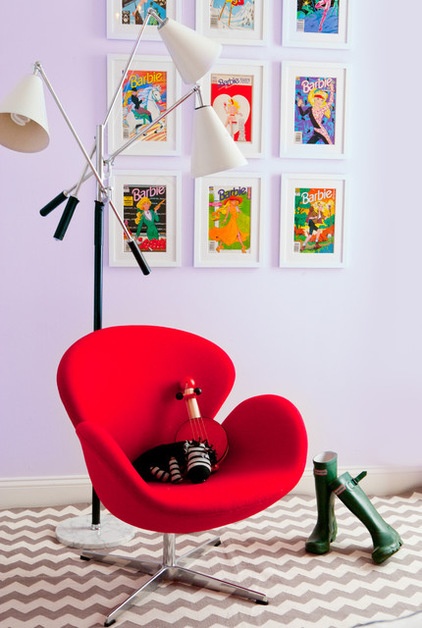
6. Pair pastels with an eye-popping, clashing color. Want to add a playful, energetic vibe to a restrained pastel palette? Break up the pretty scheme by injecting a shot of bold, clashing color. Here a fire-engine-red accent chair does the job nicely and instantly awakens this lovely lavender kids’ zone.
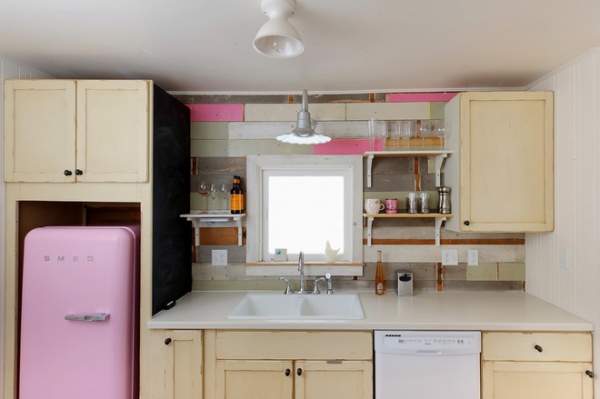
7. Try pastel-toned appliances … Want to make a bold style statement in your kitchen? Rather than letting your cabinetry have all the fun by dressing it in a cheery pastel color, opt for a neutral scheme and inject pops of sorbet hues in the form of colored appliances instead. I love this retro-style powder-pink fridge. Notice how planks in a similar hue have been incorporated into the rustic-style reclaimed-timber backsplash to tie the scheme together.
Tip: For a dramatic, high-impact look, select a complete suite of appliances (including countertop gadgets) in the same pastel shade.
Refrigerator: ’50s Retro Style in pink, Smeg
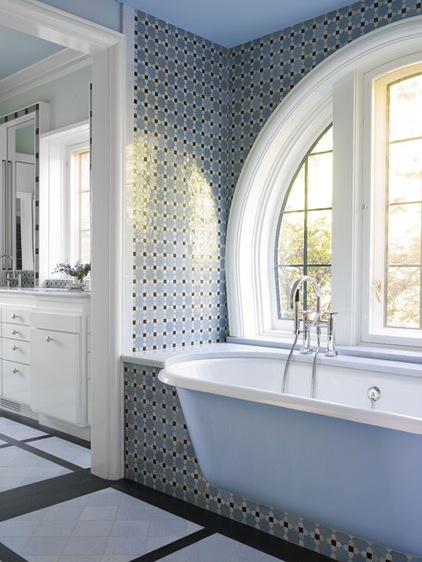
8. … or bath fixtures. While you’re at it, why not try a similar look in your bathroom? Obviously you won’t be using appliances in the space, but incorporating pastel-tinged bathware into your bathing area will also result in statement-making style.
Tip: Pastel blues and greens are great color choices for rooms where you like to rest and relax (such as the bathroom, bedrooms and living areas), as they can help create a calming, serene atmosphere. Warm tones, such as sunny yellow, are an ideal choice for the hub of the home — the kitchen — as they create a sense of coziness, plus they’re cheerful and inviting.
Tub: Astonian Luxor Cast Iron Freestanding Bathtub in Periwinkle, Aston Matthews
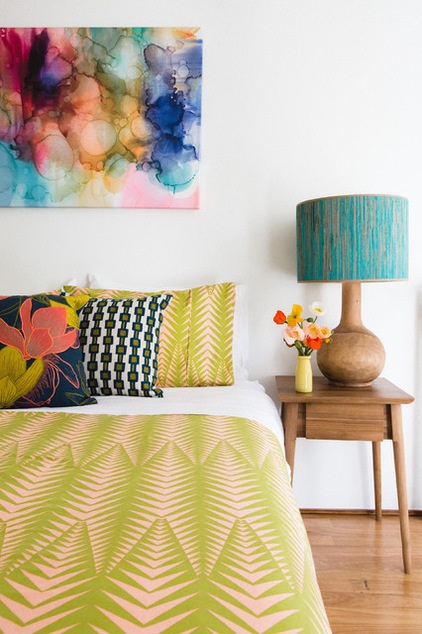
9. Mix and match different sorbet shades … Don’t be afraid to bring multiple pastels into your decorating scheme to create an eye-catching and dynamic look. However, be mindful to use them sparingly and balance them with white, neutrals and natural materials to avoid a sweetness overload.
In this colorful, eclectic bedroom, an abstract artwork dressed in both vibrant and muted shades serves as a reference point for the room’s light, airy color scheme. Notice how pastel hues seen in the painting (such as pale orange, green and yellow) are echoed in the quilt cover, soft furnishings and vase. The crisp white walls and sheets, as well as the wood flooring and furnishings, also help dial down the cuteness factor.
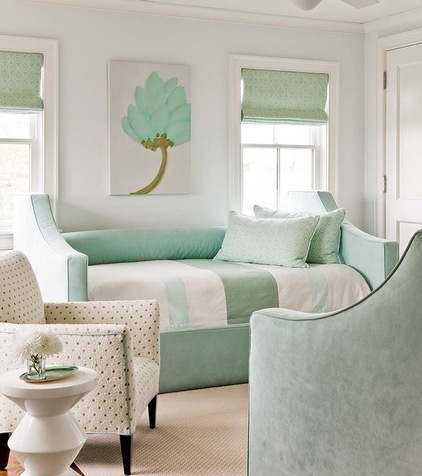
10. … or pepper your space with a single sorbet hue. For a more cohesive look, stick with furniture, accents and design features in the same chalky color. This fresh, inviting bedroom shows how to pull off this look like a pro — pops of mint green have been scattered around the room to create a balanced, harmonious feel. Hearty doses of crisp white and warm neutrals have been introduced to add contrast and ensure that the space doesn’t look too pastel-heavy.
Tip: Add a few accents in a more saturated version of the same color for another layer of interest and contrast.
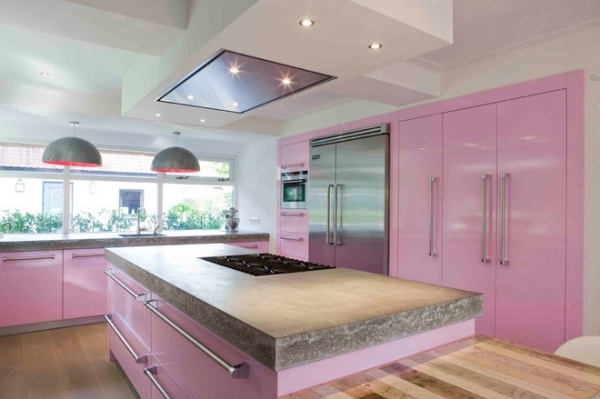
11. Give pretty pastels some tough love. An easy way to toughen up soft pastels is to throw some raw, edgy materials into the mix — think industrial finishes such as concrete, steel, exposed brick and timber. For a look that’s more sophisticated, pair powder hues with sleek materials such as natural stone, glass and gleaming metallic surfaces, while rustic touches such as distressed leather, cowhide and reclaimed wood will infuse any space decorated in pale tones with a cool, earthy and eclectic vibe.
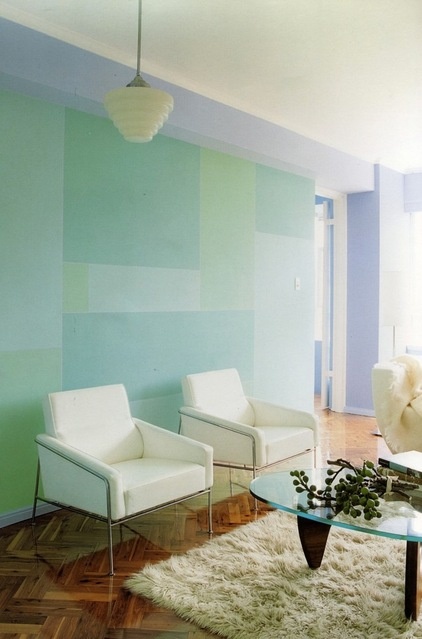
Tell us: Do you do pastels? Please share your decorating tips and photos of your home in the Comments section.












